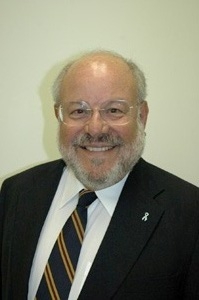With the second anniversary of the Fukushima Daiichi nuclear disaster this week, with North Korea having just threatened a "pre-emptive nuclear attack" against the United States and a U.S. senator saying this would result in "suicide" for North Korea, with Iran suspected of moving to build nuclear weapons, with the continuing spread of nuclear technology globally, the future looks precarious as to humankind and the atom.
Can humanity at this rate make it through the 21st Century?
We were only able to get through the 20th Century without a major nuclear weapons exchange--without atomic doomsday--by the skin of our teeth.
With more nations having the ability to construct nuclear weapons--and any country with a nuclear power facility has the materiel and trained personnel to make nuclear weapons--the likelihood of this luck running out is high.
The only realistic way to secure a future for the world without nuclear war is for the entire planet to become a nuclear-free zone--no nuclear weapons, no nuclear power.
Radical? Yes, but consider the even more radical alternative: a world where many nations will be able to construct nuclear weaponry because they possess nuclear power technology. The only real way to end the threat of nuclear weapons spreading throughout the world is to abolish nuclear weaponry and eliminate nuclear power. Consider the alternative: trying to keep using carrots and sticks, juggling on the road to inevitable nuclear catastrophe.
There are major parts of the Earth--the entireties of Africa and South America, the South Pacific and others--that are Nuclear-Weapon-Free Zones because of regional treaties recognized by the United Nations. In 1975, the UN General Assembly passed a resolution defining a Nuclear-Weapon Free Zone as an area with the "total absence of nuclear weapons" and establishing "an international system of verification and control"to guarantee compliance with the obligations deriving from [this] statute." http://www.un.org/disarmament/WMD/Nuclear/NWFZ.shtml
But if we are truly to have a world free of the horrific threat of nuclear weapons, the goal needs to be more than zones without them. A world free of the other side of the nuclear coin--nuclear power--is also necessary.
Any nuclear power facility can serve as a nuclear bomb factory.
That's how India got The Bomb in 1974. Canada supplied a reactor for "peaceful purposes" and the U.S. Atomic Energy Commission trained Indian engineers. And lo and behold, India had nuclear weapons
Some will say putting the atomic genie back into the bottle is impossible. However, anything people have done other people can undo--especially if the reason is good. And the prospect of massive loss of life from nuclear destruction is the best of reasons.
There's a precedent in the outlawing of poison gas after World War I when its terrible impacts were tragically demonstrated. Chlorine gas, mustard gas, phosphene gas killed thousands on both sides of the conflict. http://www.firstworldwar.com/weaponry/gas.htm The Geneva Protocol of 1925 and the Chemicals Weapons Convention of 1933 outlawed chemical warfare and to a large degree the prohibition has held.
As for the connection between purportedly "peaceful" atomic energy and nuclear weapons, physicist Amory Lovins and attorney Hunter Lovins spell it out well in their book Energy/War: Breaking the Nuclear Link. click here " All nuclear fission technologies both use and produce fissionable materials that are or can be concentrated. Unavoidably latent in those technologies, therefore, is a potential for nuclear violence and coercion which may be exploited by governments, factions," they write.
"Little strategic material is needed to make a weapon of mass destruction. A Nagasaki-yield bomb can be made from a few kilograms of plutonium, a piece the size of a tennis ball," they note. A large nuclear power plant "annually produces hundreds of kilograms of plutonium; a large fast breeder reactor would contain thousands of kilograms; a large reprocessing plant may separate tens of thousands."
Civilian nuclear power technology, they emphasize, provides the way to make nuclear weapons, furnishing the materiel and personnel. Nuclear weapons non-proliferation, they say, requires "civil denuclearization."
As to claims of the energy generated by nuclear power plans being necessary, that's not true. Safe, clean, renewable energy--led by solar and wind energy technologies--is available to provide all the power the world needs.
(Note: You can view every article as one long page if you sign up as an Advocate Member, or higher).





